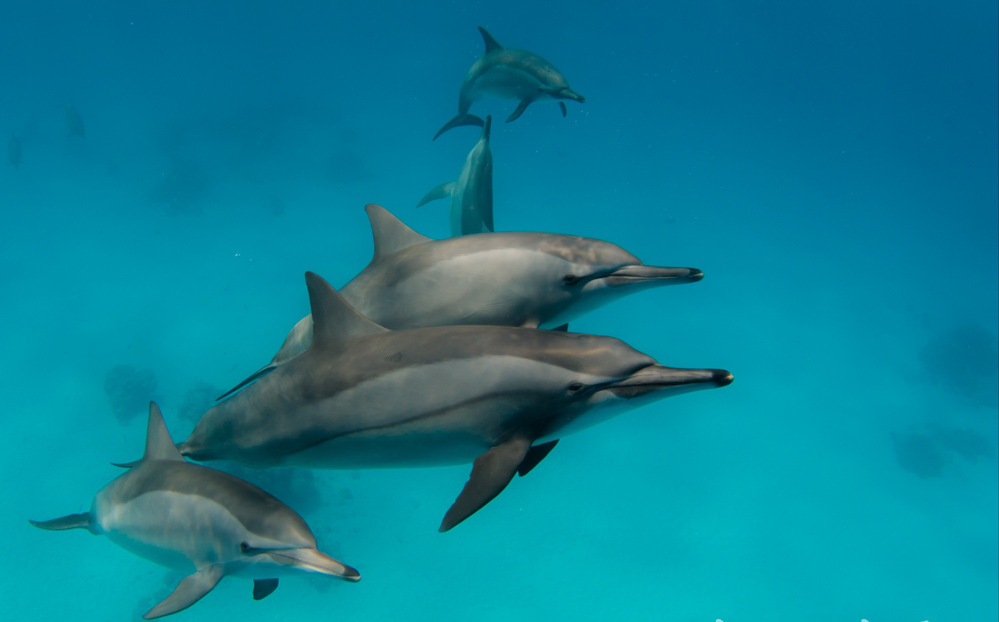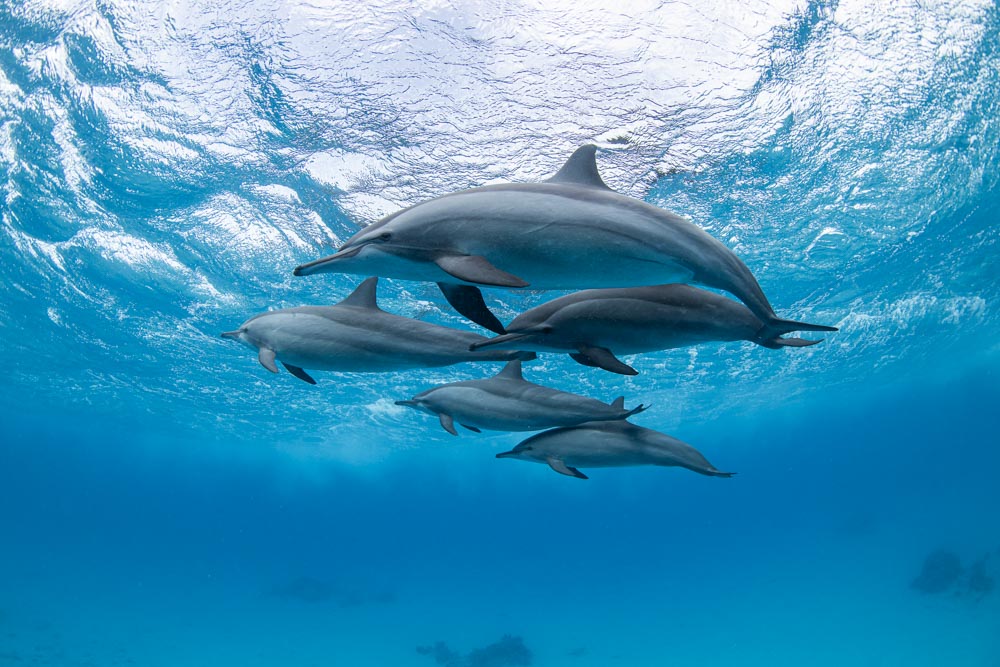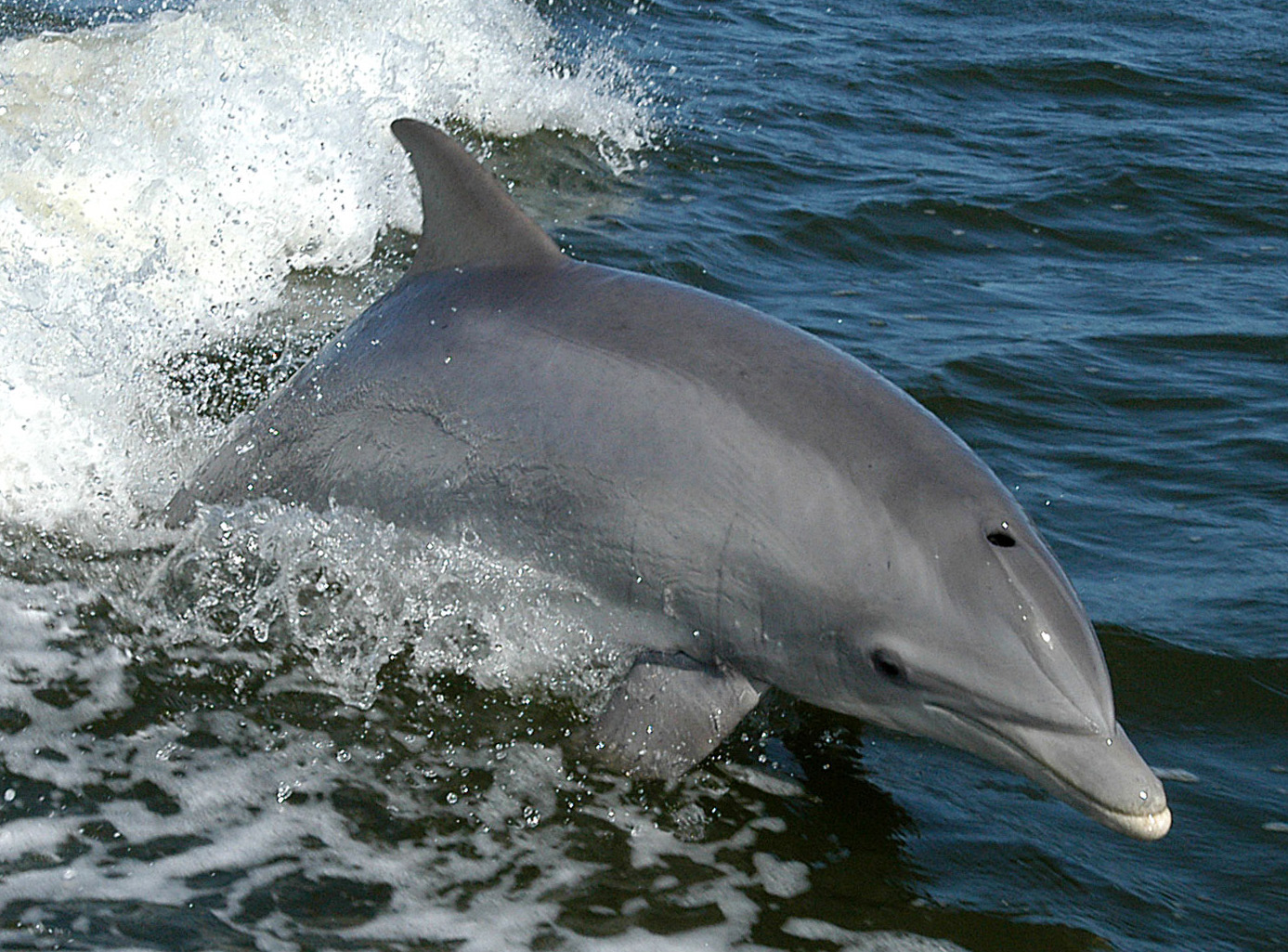Dolphins of the Red Sea

When I was little, I had lots of animal heroes. There was Lassie the dog, Black Beauty the black stallion, Skippy the kangaroo and of course my favourite: Flipper the dolphin.
Flipper was a particularly clever and intelligent dolphin and rescued his human friends from all kinds of dangerous situations. He was simply a hero to me. And of course, I wanted to meet Flipper every summer holiday by the sea.
Until today, dolphins trigger feelings of happiness in me. When they glide elegantly through the water, jump high and communicate with each other. Simply beautiful. Happy all round.
Today we want to introduce you to the two best-known dolphin species in the Red Sea. Ready for some brief information about our elegant swimmers?

Spinner Dolphins
The Eastern Pacific Dolphin is a subspecies of spotted dolphin. It is also called spinner dolphin primarily because it likes to perform leaps that involve spinning rapidly around its own body axis like a drill. A few facts: The body length of the spinner dolphin is about 1.20 to 2.30m with a weight between 20 and 80 kg. Characteristic of all is a triangular, barely sickle-shaped dorsal fin and a long, narrow snout and is dark gray above and creamy white below on the belly. Dark spots may stand out on the base of the tail, back and throat. The muzzle is strikingly elongated and has a dark tip. Always nice to note for us is the playfulness of this dolphin species. They are very acrobatic and have been known to “ride” the bow waves of boats.

Bottlenose Dolphin
Also Flipper, the bottlenose dolphin, can often be found in the Red Sea. As a childhood friend, he attracted millions of children to the television and has become the most recognisable of all dolphins. Although the “common dolphin” predominates in European waters, the bottlenose dolphin shapes the image that people have of dolphins. The bottlenose dolphin is gray in color and has a lighter belly. It can grow between 1.9 and 4 meters long, making it much larger than the spinner dolphin. Its weight is usually between 150 and 300 kg. Characteristic is the short snout, which has given this dolphin its English name Bottlenose Dolphin because of its shape. Thanks to its crescent-shaped dark fin, it can be easily recognized. It lives in close social associations (schools) and swims between 60 and 100 km a day, diving up to 500 m deep. And we have certainly all heard them, the whistling sounds of bottlenose dolphins…. These high-frequency clicking sounds are used by them for echolocation.
Two small requests, pay attention:
First: Do not buy any fish caught in trawls or ring nets. Up to 20,000 dolphins and whales die in these nets every year. Once caught in the net, they can no longer reach the surface to breathe.
Although dolphins can see the nets, they do not necessarily recognise them as a danger. Scientists have discovered that the animals swim around the nets as soon as they realise that they could be dangerous to them. However, this is often too late.
Second: Dolphin shows are exciting for many people and are especially beautiful for children to watch. However, the animals themselves suffer in captivity. Rather try to go on an excursion where you can meet the animals in the wild.
Text: Nina Lyner, Indeep Liveaboard, Communications
Pictures: Eslam Basuny & Wikipedia
Follow us on our Social Media Channels and get more information about the Red Sea, the underwater world and its inhabitants. And of course more about diving and why we love it so much.
One Comment
Comments are closed.

🐙🐙😊